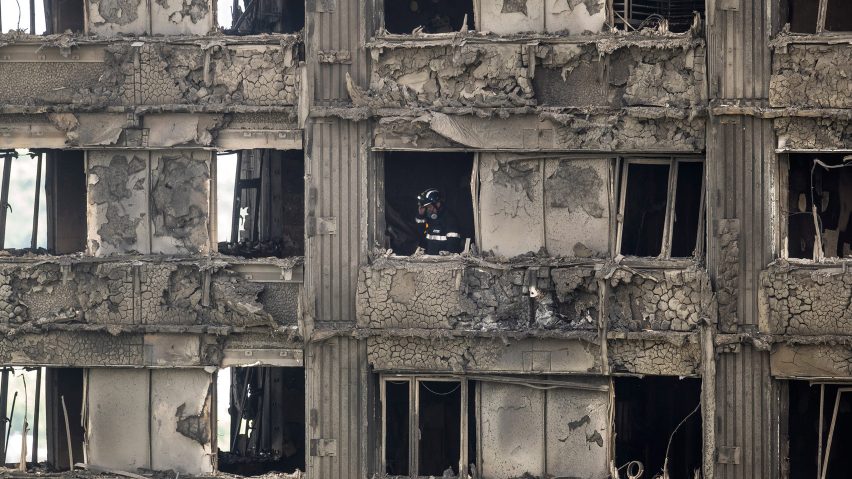
Grenfell Tower cladding identified as cheaper and more flammable option
The cladding used in the Grenfell Tower renovation has been identified as a cheaper and more flammable variety, amid confusion over whether the material is legal in the UK.
The cladding used in the recent renovation of the west London tower was the cheaper of two options offered for the job by manufacturer Omnis, according to The Guardian.
The Reynobond PE (polyethylene) panels selected over the Reynobond FR (fire resistant) panels were £2 cheaper per square metre.
The aluminium-composite panels, which have a core made of the flammable plastic polyethylene, were installed as part of a recent £8.7 million overhaul of the 24-storey tower near Notting Hill.
The cladding was quickly identified as appearing to help to spread the fire – which broke out at 1am last Wednesday, and has killed at least 79 residents.
London firm Studio E Architects and contractors Rydon oversaw the refurbishment of the 1970s building, and completed the work last summer.
Rydon claims the works met all fire regulations and health and safety standards. But chancellor Philip Hammond has claimed the cladding – which is banned for high-rise buildings in other parts of Europe and America – is illegal in the UK.
Speaking on the BBC1 television programme the Andrew Marr Show yesterday, Hammond said: "My understanding is the cladding in question, this flammable cladding which is banned in Europe and the US, is also banned here."
"So there are two separate questions. One: are our regulations correct, do they permit the right kind of materials and ban the wrong kind of materials? The second question is: were they correctly complied with?"
"That will be a subject that the inquiry will look at. It will also be a subject that the criminal investigation will be looking at."
But his claims have been challenged by John Cowley, the managing director of CEP Architectural Facades, which is owned by Omni and fabricated the cladding panels.
"Reynobond PE is not banned in the UK. Current building regulations allow its use in both low-rise and high-rise structures," said Cowley in a statement issued following the programme.
He instead places responsibility with the project's fire and building compliance officers, and the architects.
"The key question now is whether the overall design of the building's complete exterior was properly tested and subsequently signed off by the relevant authorities – including the fire officer, building compliance officer and architect – before commencement of the project," added Cowley.
The UK government has launched a public inquiry into the fire at Grenfell Tower, as well as an emergency review into 4,000 similar residential high-rise buildings.
Emma Dent Coad – the design writer recently elected Labour MP for the historically Conservative Kensington and Chelsea borough – said she believes low-quality materials played a role in the fire.
"I can't help thinking that poor-quality materials and construction standards may have played a part in this hideous and unforgivable event," she told The Guardian.
The overhaul of the 1970s building has been in part attributed to the area's gentrification, with planning documents for the works pointing to improve the appearance of the building.
Many of the tower's occupants had raised concerns about the superficial level of works.
No less than 10 complaints regarding fire risks were also reported by residents on the Grenfell Action Group blog, which claims their repeated complaints "fell on deaf ears".
In a column for Dezeen, Owen Hatherley said the fire highlighted the widespread neglect of the UK's residential high-rises.
Photography is courtesy of Getty.